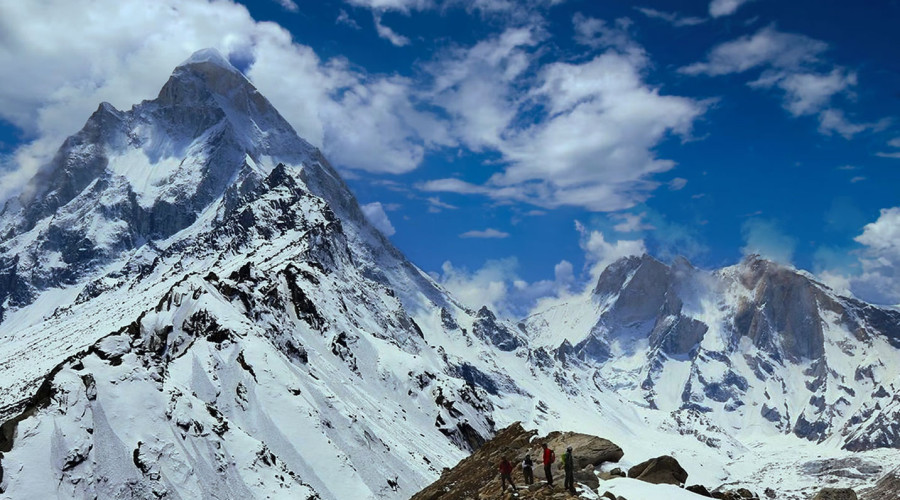If you're an adventure enthusiast, Nepal is likely at the top of your travel bucket list.
With its breathtaking landscapes, towering mountains, and rich cultural heritage, Nepal offers some of the world's most remarkable trekking experiences.
Trekking in Nepal is a popular adventure activity, and it's essential to understand the trekking permits to ensure a smooth and legal trekking experience.
While trekking in Nepal, you may need various permits, depending on the region you plan to visit.
1. TIMS (Trekkers' Information Management System)
Before you consider trekking in Nepal you must acquire the Trekkers' Information Management Systems (TIMS) Card.
You can obtain the TIMS card at the Tourism Information Center in Kathmandu. It's a straightforward process but remember that you cannot trek solo in Nepal.
You'll need to engage a licensed trekking guide or a reputable trekking agency, who will assist you in obtaining the TIMS card.
TIMS Card is mandatory to ensure the safety and security of trekkers in the general trekking areas in Nepal.
As per the trekking agencies' association (TAAN) TIMS card is applicable in all trekking areas of the country including restricted areas.
Group trekkers will have to pay for Blue TIMS cards by paying a fee of NRP 1,000 per person (The Nepalese rupee (NPR) is the national currency of Nepal), while FITs (Free Individual Trekkers) have to get Green TIMS cards by paying a fee of NRP 2,000.
Similarly, group trekkers from SAARC countries must pay NRP300 for TIMS cards, while FITs from the SAARC region must pay NRP 600 each.
*NOTE: Solo trekking is not allowed in Nepal. You will need a licensed guide from a certified trekking agency to trek in Nepal's stunning landscapes.
Here's what you must have in order to apply for a TIMS card:
Your card includes key details such as your country of residence, your trekking route, the trekking company you're using, and a local emergency contact number.
Therefore, please keep in mind that you should not initiate the TIMS card application process until you've gathered the following information:
- Your entry and departure dates for Nepal.
- The entry and exit points for your trek.
- A comprehensive trek itinerary.
- A local emergency contact number (which can be provided by your tour operator).
- An emergency contact number from your home country.
- Your insurance policy number (as trekking without traveler's insurance is not allowed).
- A copy of your passport.
- Two passport-sized photographs.
2. National Park/Conservation Area Permits:
Nepal boasts an abundance of national parks and conservation areas, making it essential to have a National Entry Permit.
High-altitude treks in Nepal are typically situated within either a conservation area or a national park. For instance, the Annapurna Circuit Trek takes place within the Annapurna Conservation Area Project (ACAP), while the entirety of the Everest base camp is situated within Sagarmatha National Park.
National Park / Conservation Area permits are required for specific trekking regions within Nepal and also vary in cost. These entry fees can be paid either at the Tourist Service Center in Bhrikutimandap, Kathmandu, or at the designated entry points.
According to the Nepal Tourism Board (NTB), permit fees differ based on the categories of individuals, including Nepali citizens, SAARC nationals, foreigners, and children eligible for discounts.
Here's a list of what permits you will require for some specific treks:
Sagarmatha National Park
If you're trekking to iconic destinations like Everest Base Camp, Gokyo, or the Three Passes, you'll need to pay 3000 NPR for a Sagarmatha National Park Permit, in addition to the TIMS card.
Annapurna Conservation Area
Treks like the Annapurna Circuit, Annapurna Base Camp trek, Ghorepani Poonhill, Mardi Himal, and Sikles Trek require a 3000 NPR Annapurna Conservation Area Permit along with the TIMS card.
Langtang National Park
For treks in the Langtang region, such as Langtang Valley, Langtang Gosaikunda, Tamang Heritage Trek, and Ganja La Pass, you'll need a TIMS card and a Langtang National Park Permit.
3. Restricted Area Permit:
Certain areas in Nepal are designated as "Restricted," such as Upper Mustang and Upper Dolpo. To trek in these regions, you'll require a Restricted Area Permit.
Where to get your Restricted Area Permit?
The restricted area permit can be obtained from the Department of Immigration in Kalikasthan, Kathmandu.
You must obtain restricted-area trekking permits if you intend to trek in any of the following regions:
- Humla
- Kanchenjunga
- Manaslu
- NarPhu Valleys
- Tsum Valley
- Lower Dolpo
- Upper Dolpo
- Upper Mustang
The cost of this permit varies depending on the specific area and duration of your trek.
It is a must to trek with a registered trekking company.
Trekking outside the designated areas or routes is considered against the law.
You must carry your trekking permit with you while trekking.
If asked, you must show your trekking permit to immigration officers or the police.
4. Rural Municipality Fees:
Depending on your chosen trek, you may need to pay a fee to the local rural municipality.
You won't have to plan beforehand as the municipality trekking permit can be obtained at the checkpoint or entry point to each municipality.
For example: Khumbu Pasang Lamhu Rural Municipality: If you plan to trek to Everest, you'll need to pay this rural municipality fee. This contribution helps support the local communities along the route.
Navigating the web of trekking permits in Nepal may seem daunting, but it's a necessary process to preserve the natural beauty and culture of this remarkable country.
Make sure to plan ahead, choose a reputable trekking agency, and familiarize yourself with the specific permits required for your chosen adventure.
With the right permits in hand, you'll be well on your way to experiencing the wonders of Nepal's Himalayan landscapes and vibrant communities.





Comments(0)
No Comment yet. Be the first :)